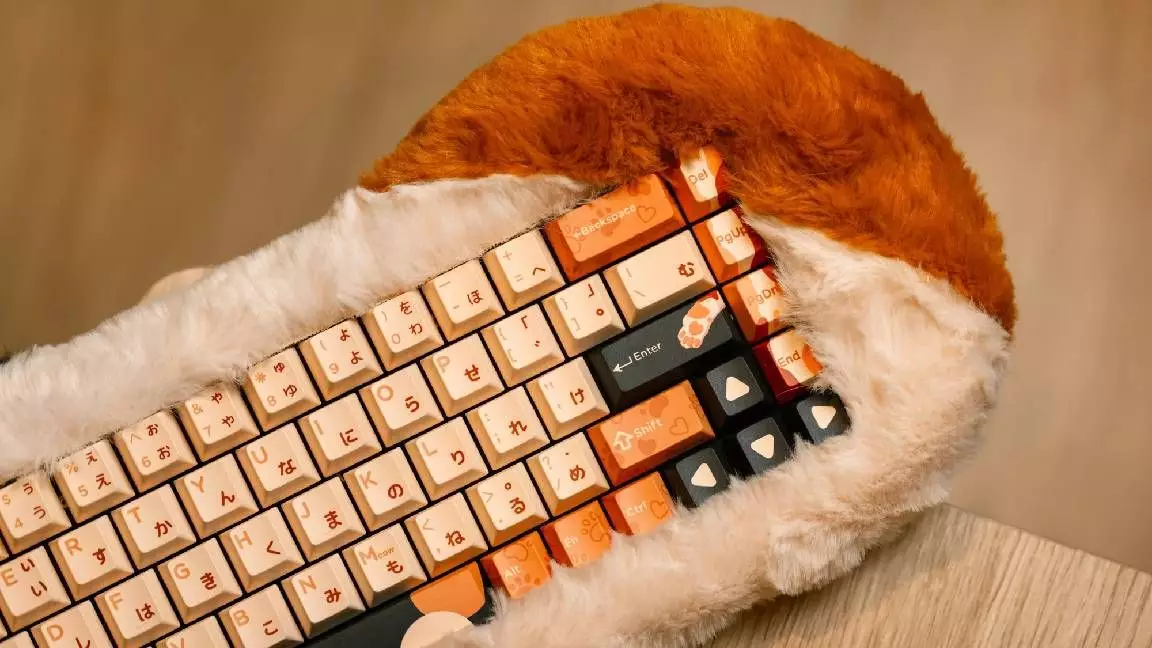In a digital world dominated by the mundane click-clack of standard keyboards, the emergence of novelty keyboards has sparked both delight and discontent among tech enthusiasts. These eye-catching devices often feature quirky designs, unusual materials, and an almost whimsical appeal that can easily lead an avid collector to reconsider their financial boundaries. This article explores the compelling allure of these unique keyboards, specifically examining recent offerings from Dry Studio and QwertyKeys, while delving into the psychological implications of our gaming, work, and hobby gear.
Recent keyboard launches have introduced some bold designs that challenge conventional aesthetics, chief among them being Dry Studio’s Petbrick 65. This keyboard boldly breaks from typical designs by incorporating a fluffy outer frame that is not only visually appealing but also tactilely engaging. Emphasizing that it’s handmade and easily washable, Dry Studio has created an appealing proposition for those who value both aesthetics and practicality. However, this raises a pertinent question – does the addition of a ‘pettable’ exterior genuinely enhance the keyboard’s functionality, or is it a gimmick designed to distract from other performance factors?
Available in two endearing colorways, ‘Calico’ and ‘Odd-eye’, the Petbrick 65 clearly targets users who appreciate the blend of playful design and tactile pleasure. The unique touch of Jelly Cat-like textures evokes comfort and nostalgia, but can it truly justify a price tag around $239? While the tactile benefits may resonate with cat lovers and quirky design enthusiasts, one must consider whether such indulgences align with broader spending habits when financial constraints loom.
The notion of integrating a screen into a keyboard had traditionally been met with skepticism. However, a review of products like James’ take on the SteelSeries Apex Pro TKL Gen 3 or QwertyKeys’ QK80 MK2 suggests an evolving narrative. The latter boasts wireless capabilities, RGB lighting, and leaves spring mount technology, leading to enhanced typing experiences that pique interest. Moreover, it features a novel option of customizing the screen, which opens avenues for function beyond mere aesthetics— notably, the amusing Bongo Cat mode that brings a playful element to productivity.
The cultural icon of Bongo Cat engages users with a delightful interaction as the on-screen feline mimics keystrokes in real-time. This transformation from a standard input method to an interactive experience draws on the nostalgic connections we have to gaming and the internet, making mundane tasks feel more engaging. However, one might ponder whether this form of digital playfulness sidesteps serious productivity in favor of whimsical distractions.
As one navigates through the world of novelty keyboards, a recurring theme emerges—the emotional investment in our tech gadgets often muddles our logical decision-making. With prices ranging from reasonably accessible to extravagant, collectors are frequently faced with moral dilemmas: is the love for a product’s aesthetic enough to justify its high cost? While the novelty factor can certainly create an initial attraction, it’s crucial for consumers to assess if these purchases genuinely enhance their daily computer-use experience or if they’re simply another layer of clutter.
By engaging with unique designs that blend fun and functionality, users find themselves in an endless cycle of admiration and rationalization. The catch-22 arises when affections towards quirky designs overshadow practical concerns, such as ergonomics and performance. Notably, both Dry Studio and QwertyKeys effectively market products that captivate through their unique themes, drawing a dedicated clientele even as concerns regarding usability linger.
Ultimately, the world of novelty keyboards shines a light on our complex relationship with technology and design. With creative offerings like the Petbrick 65 and QK80 MK2, it’s clear that these gadgets are more than mere tools—they’re vehicles of self-expression and emotional connection. However, consumers must continually assess the balance between infatuation and rational purchase choices, ensuring that while we indulge in the joy of creativity and uniqueness, we do not lose sight of practicality and sensible spending. In a tech-driven society that celebrates individuality, striking this balance will likely dictate the future of novel keyboard designs and their integration into our daily lives.

